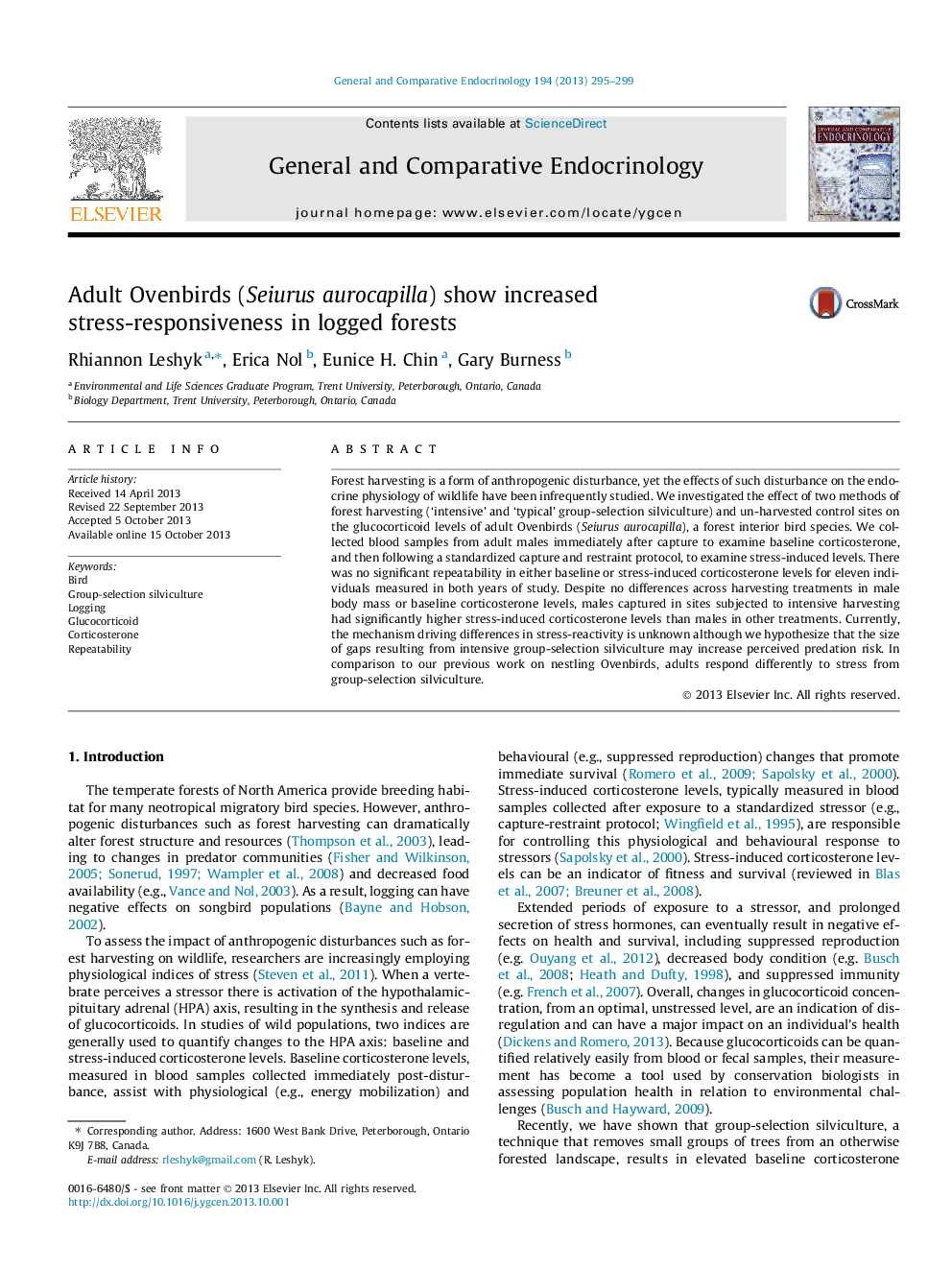| Article ID | Journal | Published Year | Pages | File Type |
|---|---|---|---|---|
| 2800323 | General and Comparative Endocrinology | 2013 | 5 Pages |
•We investigate group-selection silviculture on stress reactivity in Ovenbirds.•Group-selection increases stress-induced corticosterone by approximately 50–60%.•Baseline levels did not differ significantly across treatments.•There is a lack of repeatability across years in corticosterone levels.
Forest harvesting is a form of anthropogenic disturbance, yet the effects of such disturbance on the endocrine physiology of wildlife have been infrequently studied. We investigated the effect of two methods of forest harvesting (‘intensive’ and ‘typical’ group-selection silviculture) and un-harvested control sites on the glucocorticoid levels of adult Ovenbirds (Seiurus aurocapilla), a forest interior bird species. We collected blood samples from adult males immediately after capture to examine baseline corticosterone, and then following a standardized capture and restraint protocol, to examine stress-induced levels. There was no significant repeatability in either baseline or stress-induced corticosterone levels for eleven individuals measured in both years of study. Despite no differences across harvesting treatments in male body mass or baseline corticosterone levels, males captured in sites subjected to intensive harvesting had significantly higher stress-induced corticosterone levels than males in other treatments. Currently, the mechanism driving differences in stress-reactivity is unknown although we hypothesize that the size of gaps resulting from intensive group-selection silviculture may increase perceived predation risk. In comparison to our previous work on nestling Ovenbirds, adults respond differently to stress from group-selection silviculture.
